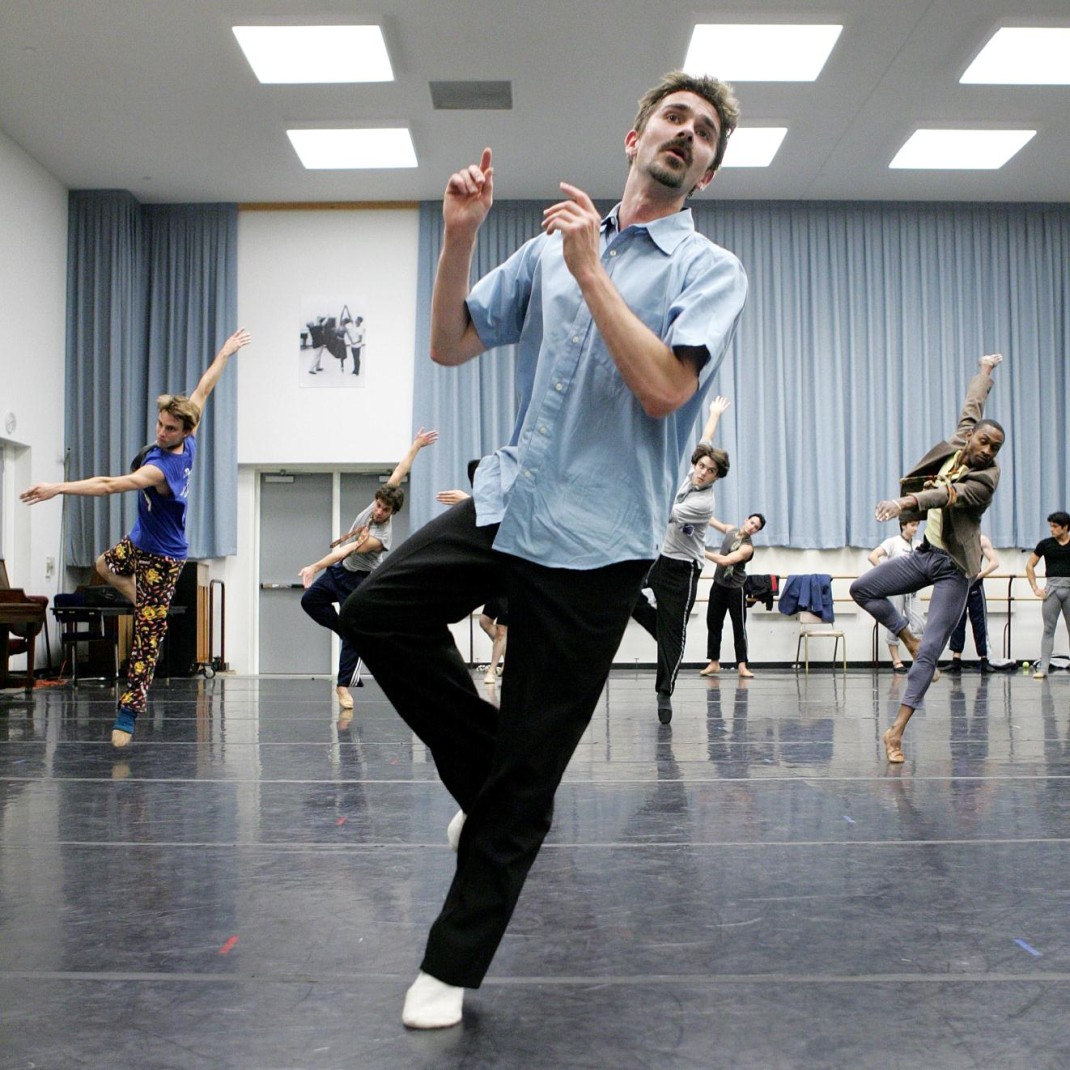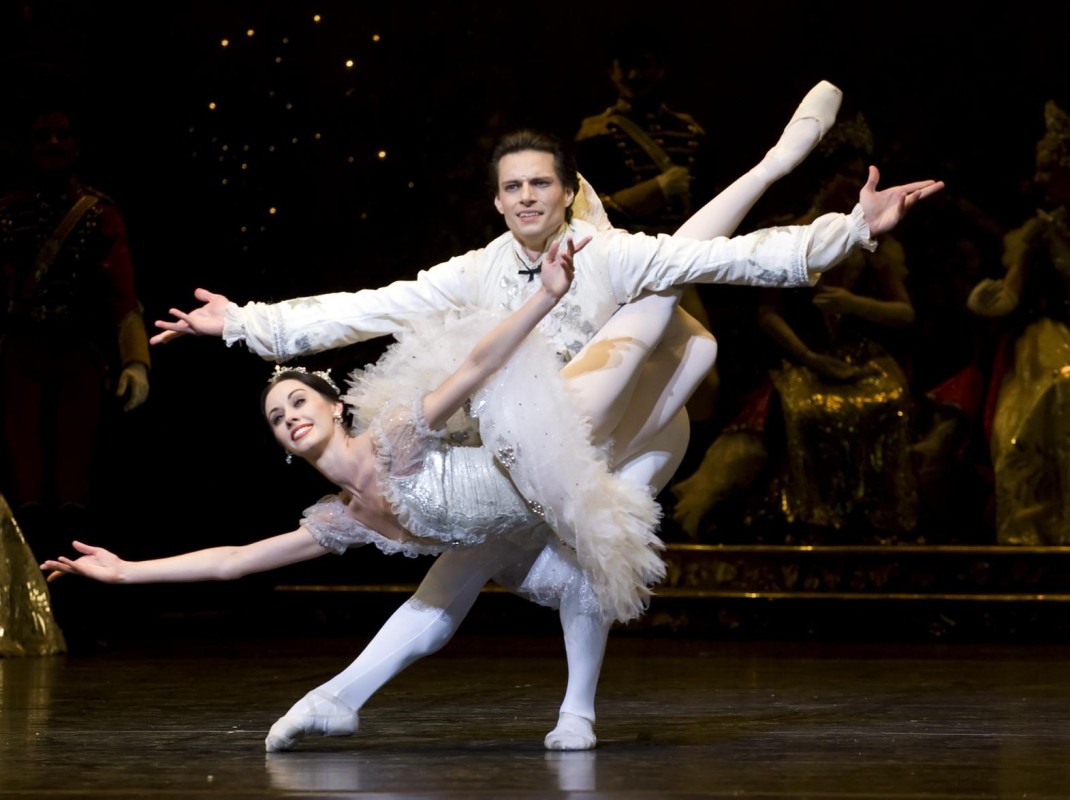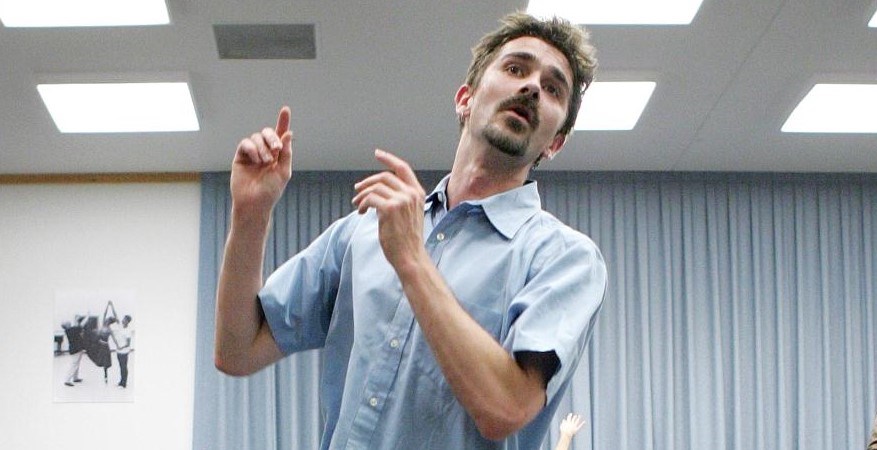A recent visit to the United States saw me in Houston, Texas, where I was able to have a look at Houston Ballet’s new premises and enjoyed being shown around by Stanton Welch. And there is more than one Aussie at Houston Ballet these days. Below is the text of a story published on 26 November 2011 in The Canberra Times under the heading ‘An Aussie in Houston’.

— Stanton Welch is in a buoyant mood as he shows me around Houston Ballet’s stunning new home in downtown Houston, Texas. Melbourne-born Welch has been artistic director of Houston Ballet, the fourth largest ballet company in the United States, for eight years. The company moved into its six-storey headquarters in February of this year and the new studios—nine of them—are huge with high ceilings and lots of windows letting in the beautiful Texan light. In some, children are taking a ballet class. In others, company members are rehearsing for the forthcoming production of the Christmas classic The Nutcracker and for the annual gala, Jubilee of Dance. The building hums with activity.
Welch, a young-looking 42 year old, is the elder son of Marilyn Jones and Garth Welch, former principal dancers with both the Borovansky and the Australian Ballets. Both also worked with Sydney Dance Company and both are teachers of renown. Their second son, Damien, retired quite recently from his position as a principal dancer with the Australian Ballet. Together the four of them are familiarly called the “Royal Family of Australian Ballet” such is their collective status in the Australian dance world. Damien is also currently in Houston to stage his brother’s production of Cinderella for Houston Ballet next year. And indeed the month of November is something of a family time. Jones is also visiting. “Mum comes over a couple of times a year. I usually try to get her to do a bit of teaching while she’s here,” Welch says with a grin.
Welch was a late starter in the ballet world: he took his first lessons only when 16. But there was no looking back after that. He choreographed his first piece, Hades, during the first year of his dance training in 1986 and it won several eisteddfod prizes. By 1989 he had joined the Australian Ballet and in 1990 received his first choreographic commission, which resulted in A Time to Dance for the Dancers Company of the Australian Ballet. He went on to make his first major piece, Of Blessed Memory, for the main company in 1991. By 1995 he was a resident choreographer with the Australian Ballet and remains so, from a distance, to this day. The extent of his choreographic output by now is remarkable and includes works for major companies around the world. He was appointed artistic director of Houston Ballet in 2003 and for the moment he seems firmly entrenched in Houston, largest city in the state of Texas.
“What I love about working here”, he says “is that the dancers are so energised. There is absolutely no complacency. We are so lucky with audiences too. They are very adventurous and brave when it comes to new work, which is great for a choreographer. Our subscriptions continued to grow even during the recession.”
But as I look into the studios from the viewing windows I am struck by the fact that there are Australians in a number of the studios. Ballet master Steven Woodgate is busy rehearsing a large number of dancers for a group scene in Nutcracker. A Churchill Fellowship awardee for 2000, Woodgate retired from the Australian Ballet, where he was senior artist for several years, and took up the position of ballet master at Houston in 2004, the year after Welch’s arrival.
In another studio Luke Ingham, who grew up on a farm in Mount Gambier, South Australia, is rehearsing for his first princely role, that of the Prince in Nutcracker. Ingham has been with the company since July 2011 and has just toured to New York with Houston Ballet where he also took the opportunity to catch up with four of his former Australian Ballet colleagues. They were in New York to dance and promote the Australian Ballet’s New York visit in 2012.
Ingham will be dancing in Houston’s Nutcracker with his partner in life Danielle Rowe, a former Australian Ballet principal who joined Houston Ballet early in 2011. He is looking forward to the occasion. “It’s great to work with someone you love,” he says. “I love being out there on stage with Dani.”
In her relatively short time in Houston to date Rowe has already made a name for herself. A dazzling dancer and winner of a 2010 Helpmann Award as best female dancer in a dance or physical theatre production, Rowe has so far danced leading roles in Houston productions of two major classics, Sleeping Beauty and Giselle. In Giselle, a production staged by yet another Australian artist, dancer and coach Ai-Gul Gaisina, critics spoke glowingly of Rowe’s performance as “gossamer-spirited.” and noted that she moved like “a tissue in a breeze.”
There have been Australians in the Houston company for a while. Mary McKendry, who was brought up and learnt to dance in Rockhampton, Queensland, was a principal dancer with Houston Ballet in the 1980s when a young man from Mao’s China defected while on an exchange visit to Houston Ballet. His name was Li Cunxin and McKendry eventually married him. They moved to Australia where Li would go on to have a stellar career with the Australian Ballet, write his best selling autobiography Mao’s Last Dancer and eventually become a stockbroker in Melbourne. Li often returns to Houston and did so earlier this month to be honoured for his achievements by the Houston-based organisation Dance of Asian America.

What is it that draws Australian dancers to Houston Ballet? Welch believes that it is the varied repertoire that the company offers. His dancers get the opportunity to perform in works that he creates himself, works by acclaimed American and European choreographers and both old and new takes on the classics. Danielle Rowe suggests the same. Along with a positive work ethic, it was what she was looking forward to most of all when she left the Australian Ballet for a new career in Houston. Ingham couldn’t resist the thought though that, with his farming background, there might be the added attraction of the Texan cowboy culture! But whatever it is, the vibes are good at Houston Ballet. Welch strides through his new domain laughing and joking and generously accommodating my every request.—
And in addition to those Australians mentioned above, former Australian Ballet dancer Andrew Murphy is an instructor at Houston Ballet’s academy. Murphy is married to Sabrina Lenzi, ballet mistress of Houston Ballet II, a company similar in outlook and mission to the Australian Ballet’s Dancers Company.
Michelle Potter, 26 November 2011
Featured image: Stanton Welch in rehearsal (detail). Photo: © Bruce Bennetts. Courtesy of Houston Ballet

It’s good to have a first hand report from Houston. I have a Google alert for Stanton Welch and am constantly amazed at the extent of his activities both at Houston Ballet and elsewhere. If he were a sporting figure a la Harry Kewell I am sure he would have a far higher public profile in his home country considering the international mark he has made in his chosen field.
The mention of repertoire in connection with Rowe and Ingham departing for Houston is most interesting. If one looks at the rep at Houston, and also at Birmingham where a number of Australians are based, one sees a vast range of works being danced, ranging from the 19th century classics through the great works of the 20th century masters to new work. Rather like we used to experience here in Australia.
A recently released dvd of David Bintley’s superb, very Ashtonesque version of Cinderella, showcases Elisha Willis and Gaylene Cummerfield in Birmingham.
Good to hear news also of Andrew Murphy. I am not sure he departed Australia as a principal though.
You might be right re Andrew Murphy’s status with the Australian Ballet. I have changed ‘principal’ to ‘dancer’ while I sort it out.
I was bowled over by Stanton’s enthusiasm and commitment and I am only sorry I didn’t see the company perform. I had to be there when there was time to speak to people, which is often difficult when the company is in full performance mode. And you are right that Stanton deserves to have a higher profile in Australia than he does.
Re repertoire, I love the approach that there doesn’t have to be a season of a single work (or program of three short works) that goes for a goodly length of time before there is a change. The recent ABT season I saw is a case in point: nine different works over just four or so days, with those works programmed in various combinations. But it is a common approach across the world. For the audience it makes for wonderfully varied viewing. I’d say it is a terrific challenge for the dancers too and who doesn’t relish a challenge? I wonder often about the nature of the Australian Ballet as a touring company rather than one based in a single opera house, and on the nature of Australia as a ‘wide, brown land’ whose population is so dispersed.